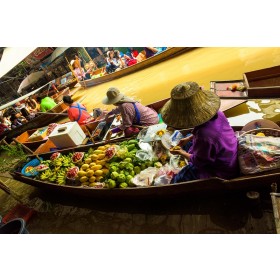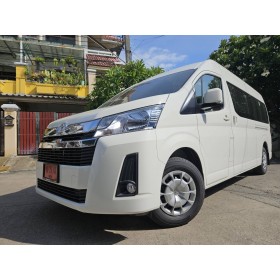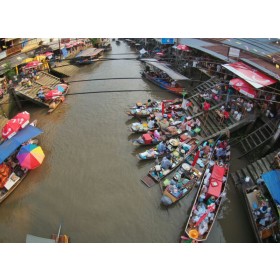×
Login Form
×
Registration
Profile Informations
Login Datas
or login
- Description
Details
Damnoen Saduak Floating Market Join Tour
Damnoen Saduak Floating Market in Thailand lies between Nakhon Pathom and Samut Songkhram, some 68 miles (109 km) southwest of Bangkok. The exotic image of a traditional Thai floating market, like this one at Damnoen Saduak, is a powerful one for visitors to visit the way of forming an intrinsic part of community life in the canals near Bangkok. Damnoen Saduak Floating Market floating market is one of the most popular sightseeing tour from Bangkok because you can only see it in Thailand. The boat venders sell mostly fruit and vegetables on open Thai original boats along the slender canals. There are many stall traders selling a range of deliciously fresh produce. The boats at Damnoen Saduak Floating Market floating market are paddled mostly by women, who wear big lampshade hats and the familiar Thai traditional blue shirts of the farming community.
Itinerary
06.30 am: We will pick you up from the various hotels.
07.00 pm: Departure from Bangkok capital city of Thailand for Ratchaburi Province
08.30 am: Arrive the boat pier, then get pleasure from the scenery of rural life by the long tail speed boat to the floating market
09.00 am: Arrive the floating market, nearly untouched by the modern world, you'll get pleasure from watching the farmers selling various kind of products such as food, fruit, flowers and plenty kind of native product in their boats
10.30 am: Visitors can choose optional tour to go to the snake farm or the elephant riding or the paddle boat along the farmer village or free at leisure at Damnoen Saduak Market.
11.30 am: Visit the Handicraft home business
12.00 pm: Depart from Damnoen Saduak Floating Market for Bangkok
14.00 pm: We send you back to return to your hotel.Included:
• Transportation
• All admission charge as within the itinerary
• English Speaking Guide
Excluded: Personal expenses / Option TourRemark:
• Transfer Service: Pick up from Bangkok Central area, area outside will subject to an extra charge.
• Location: Ratchaburi
• Tour Type: Join Tour
• Available: EverydayThailand is truly blessed when it comes to food. Don’t miss to taste various kinds of original Thai food at Damnoen Saduak Floating Market. It is quite possible to eat for a month in Thailand without having to order the same dish twice though once you have discovered a special favorite, you will probably find it becoming a regular choice for a while. Anyway, Thai dish in Thailand and eating Thai food in foreign countries you might find out that the taste is extremely different. One of the secret is ingredient of exotic Thai herb and some unique materials that you can only find in Thailand. Eating will be one of the highlights of Damnoen Saduak Floating Market Tour. You will be able to find amazing dishes from all parts of Thailand at Damnoen Saduak Floating Market.
Staying at a good class hotel gives reasonable assurance that the restaurant food will be of a high quality, the service will be good and the menu will be expensive. If you want to pepper your meal with an extra culture, don’t be afraid to try local food at Damnoen Saduak Floating Market during your tour. Avoid dishes that are kept on display for example ducks and chickens hanging in glass cabinets, don’t accept seafood upcountry, and forget about experimenting with locusts and grasshoppers because the chances are they met their fate by insecticide poisoning. Last but not least, eating hot sir-fried meals, curries, or soups in a clean restaurant can be regarded as safe.
One distinctly Thai dish at Damnoen Saduak Floating Market that most tourists love is Pad Thai (literally, “fried Thai”), a favorite among Thais and travelers. Thin noodles are fried with a blend of sweet and bitter sauces, tofu, egg, and dried shrimp to produce a great meal, which will not be complete until you have added the complementary peanuts and a squeeze of lemon.
Another favorite dish is Pad See Yoo, often listed on menus in English as “Chinese-style noodles in soy sauce.” Flat noodles are fried together with egg and Kanar (a popular green vegetable) in soy sauce. Make sure of the extra condiments that are usually provided (vinegar, sugar, dried chili powder, and the ever present fish sauce) to create a taste to suit yourself.
After tasting Thai food and travelling around Damnoen Saduak Floating Market, you might feel thirsty. There are various kinds of fruits at Damnoen Saduak Floating Market, many of which you may never have seen before. Do try at least one fresh fruit at Damnoen Saduak Floating Market during travelling around. You will get some great photo opportunities, and the tantalizing sights, sounds, tastes, and smells make it a truly memorable experience. Well-known fruits that grow year-round and are found in abundance here include bananas (Kluay in Thai), coconuts (Ma-Phrao), watermelon (Taeng Moh), and pineapples (Sap-Parot). Other fruits, also available year-round, that are less familiar to visitors, include:Cantaloop (Cantaloupe) Tropical melon, very sweet and juicy when ripe,
Farlung (Guava) Thais often eat guava and mangoes while they are still unripe, sprinkling them with a mixture of sugar, salt, and ground chili pepper,
Malakor (Papaya) The unripe fruit is used in Thai salad (Som-Tam). When ripe, its orange flesh is slightly sweet and very juicy.
Mang-Khut (Mangosteen) Much prized, sweet white fruit that comes in hard, purple shell. It has been admired as the queen of fruit of Thailand.
Ngor (Rambutan) Small, hairy, bright red fruit with sweet, litchi-like flesh,
Som-oh (Pomelo) The largest of all citrus fruit, not unlike a large, sweet grapefruit.
Thailand also have seasonal fruits as followed:
Lumya (Longan) A small, round, sweet fruit with a brown shell, grown in the North (predominantly in Chiang Mai) and most widely available during the northern rain season (June-September),
Ma muang (Mango) There are many varieties of mango, most of them appearing from April through the hotter months. They are often eaten as dessert with sweet sticky rice and coconut milk syrup (Kow Neeyo Ma-Muang).
Toorian (Durian) This bizarre-looking fruit has the appearance of a spiky football and a smell that could lose you friends. People love it or hate it. Try it for yourself to see what the fuss is about mostly available May-June.
Currently most of seasonal Thai fruits are available all year long but the cost might be expensive if it is not in its season.
Some of the fruits available in Thailand are transformed in restaurants into deliciously refreshing juices and you can find them at Damnoen Saduak Floating Market. Try Naam Far-lung, made with guava, or Naam Lumyai, made with longan. Drinking alcoholic beverages is traditionally a male pastime, though as cultural values change, it is becoming quite common to see young women drinking beer (usually Thai-produced Singha beer) or wine. The men generally prefer beer or Thai whiskey, such as Mekong – or more expensive, foreign imports if there is a need to uphold social status.
Before returning back from visiting Damnoen Saduak Floating Market, you might be interested in purchasing exotic traditional Thai handicrafts. Many crafts, such as woodcarving, mother-of-pearl inlay, ceramics, and lacquer ware, have their origins as decorative forms in temple architecture. Some crafts have inevitably declined with the modernization of Thailand and the loss of skilled craftsmen, but others have thrived because of the increase in foreign tourism and the demand for high-quality souvenirs. Woodcarving and silverwork have maintained high standards, while woven silk manufactured in Northeast Thailand has become a major export item. Ceramics, such as celadon stoneware and finely wrought nielloware bowls, can sometimes be of exceptional quality.
Check out the top handicrafts that you will find at Damnoen Saduak Floating Market.- Ceramics Thailand produces a number of different types of ceramics, including lustrous green glazed celadon pottery. The most celebrated ceramic is the delicate and highly decorated Benjarong, the manufacture of which dates back to China’s Ming dynasty (1369-1644). Benjarong follows traditional patterns of intricately woven floral designs with the use of five colors –red, green, yellow, blue, and white. Benjarong items range from pots and vases to entire dinner services.
- Mother-of pearl inlay. Mother-of pearl inlays are used in presentation trays and in various containers, as well as on plaques bearing classical scenes. The style of decoration dates back to the Dvaravati period. Little else is known of its evolution between then and the late Ayutthaya and early Bangkok periods, when it was used extensively to decorate doors and windows in temples, as well as furniture and drinking vessels.
- Woodcarving. Thailand’s one extensive forests of teak and other hardwoods were a ready source of material for woodcarvers, whose skillful handiwork can be seen in the elaborately decorative gables, doors, and roof supports that grace almost every temple in Thailand. A ban on logging was implemented in 1989 but wood carving is still one of the most prominent Thai crafts. The timber used these days is mainly imported from Myanmar (Burma) or taken from existing supplies that have been confiscated from illegal loggers or salvaged form dilapidated buildings. Illegal logging is still rife in Thailand, so there is little doubt that some of the products you see for sale in markets have come from this source. Craftsmen turn out an amazing range of woodcarvings, from intricately carved screens, bedsteads, furniture, and 6-foot-high (2m) elephants to delicate figurines, elegant salad bowls, and novelties and games. Even moderately priced woodcarvings sometimes display impressive craftsmanship.
Damnoen Saduak Floating market is a must place to visit if you are the first time in Thailand to explore the image of a traditional Thai floating market where is one of a kind and the original powerful one for visitors. While those in Bangkok have been re-created to serve the tourist trade, the Damnoen Saduak market remains the real thing.
Damnoen Saduak Floating Market Video
Damnoen Saduak Floating Market Map
ThaiTourismGuide.com can offer travel services such as Bangkok sightseeing, van rental with driver, tour guides for tourists in Thailand. We can arrange your trip for Damnoen Saduak Floating Market for both join tour and private tour.
Please feel free to contact us to help you plan your trip by informing your e-mail address to get the best deal:
• Your destination in Thailand (Bangkok, Chiang Mai, Phuket, Pattaya)
• Budget of this trip
• Number of people in your group
• How many day in Thailand (Arrival date, Departure date)
• Your hotel (If you want to reserve hotel with us, please inform your budget or specific the hotel)
• Is there child/ senior in your group?
• Please inform where to go or what you want to do in this trip.
If you don’t have idea at this time, please check our Bangkok sightseeing or Day Trip in Bangkok with our link as followed: https://www.thaitourismguide.com/day-trips/day-trip-in-bangkok.html. We also have many activities or attractions in Thailand for other destination such as Pattaya, Phuket, Chaing Mai, Kanchanaburi, Krabi or Hua Hin.
If you need any specific information about travelling in Thailand, please feel free to contact us.- Reviews
- Tags
You may also be interested in the following product(s)
-
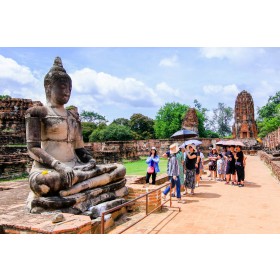
Ayutthaya Tour by Grand Pearl Cruise
As low as: ฿1,850.00
-

Airport Transfer from Bangkok Airport to Downtown
฿1,500.00 -
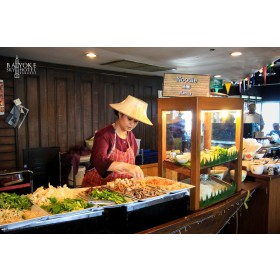
Baiyoke Floating Market at Baiyoke Sky Hotel
As low as: ฿530.00


